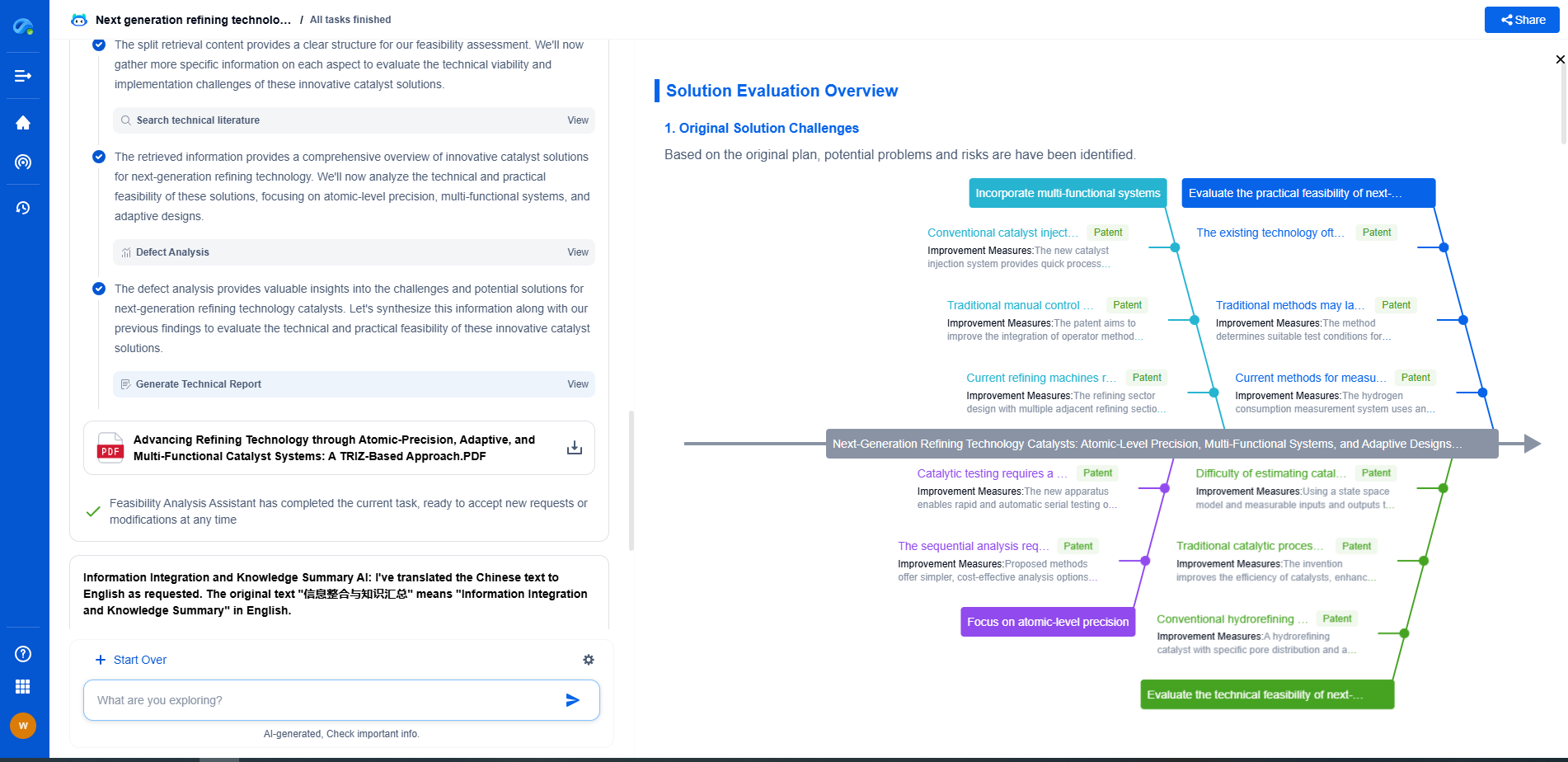Directed Self-Assembly Hybrid Processes: Chemoepitaxy + Litho
JUL 28, 2025 |
In recent years, the semiconductor industry has been on a relentless quest to push the boundaries of Moore's Law, striving for smaller, faster, and more efficient electronic components. This pursuit has led to the development of innovative techniques such as Directed Self-Assembly (DSA). DSA is a promising technology that harnesses the natural behavior of block copolymers to create highly ordered nanoscale patterns, which are crucial for next-generation semiconductor devices. However, DSA alone often requires integration with other lithographic techniques to achieve the precision necessary for advanced electronics. This brings us to the hybrid processes of chemoepitaxy and lithography, which work synergistically to refine DSA and enhance its applicability.
Understanding Chemoepitaxy
Chemoepitaxy is a variant of DSA that leverages chemical patterns to guide the self-assembly of block copolymers. This technique involves the creation of a chemically heterogeneous substrate, where regions with differing surface energies influence the alignment and orientation of the block copolymer domains. The beauty of chemoepitaxy lies in its ability to create long-range order, dramatically improving the precision and reliability of the resulting nanopatterns.
Advantages of Chemoepitaxy
One of the primary advantages of chemoepitaxy is its ability to control defectivity in the self-assembly process. By pre-patterning the substrate, chemoepitaxy minimizes the occurrence of defects that can arise from the inherent randomness of block copolymers. This control over defects is crucial for producing the high-quality nanoscale features needed in modern semiconductor devices.
The Integration of Lithography
While chemoepitaxy offers significant advantages, lithography remains an essential component in the hybrid process. Traditional lithographic techniques, such as photolithography or electron beam lithography, provide the initial patterning required for chemoepitaxy. These techniques offer the precision and resolution needed to define the chemical patterns that guide the self-assembly of block copolymers.
Lithography ensures that the initial templates are accurately positioned and aligned, setting the stage for chemoepitaxy to refine and duplicate these patterns at the nanoscale level. The integration of lithography and chemoepitaxy thus combines the best of both worlds: the precise patterning capabilities of lithography with the scalable and cost-effective nature of DSA.
The Synergy of Hybrid Processes
The hybrid approach of combining chemoepitaxy with lithography capitalizes on the strengths of each technique. The synergy between these processes allows for the creation of complex and highly ordered nanopatterns that are essential for advanced semiconductor manufacturing. By utilizing both lithography and DSA, manufacturers can achieve the high resolution, low defectivity, and cost efficiency required for cutting-edge electronics.
Challenges and Future Directions
Despite its promise, the hybrid process of chemoepitaxy and lithography is not without challenges. One significant hurdle is the development of suitable block copolymers that can reliably self-assemble under the constraints of chemoepitaxial patterns. Additionally, there is a need for further advancements in lithographic techniques to keep pace with the ever-decreasing feature sizes demanded by the industry.
Looking forward, ongoing research and development in materials science, chemistry, and engineering are expected to address these challenges. The continued refinement of hybrid processes will not only enhance the capabilities of DSA but also unlock new possibilities for the semiconductor industry, paving the way for the next generation of electronic devices.
Conclusion
In conclusion, the hybrid processes of chemoepitaxy combined with lithography represent a significant advancement in the field of directed self-assembly. By integrating the strengths of these techniques, the semiconductor industry can achieve unprecedented levels of precision and efficiency in nanoscale patterning. As research progresses, these hybrid processes are poised to play a pivotal role in the future of electronics, facilitating the continued evolution of technology in our ever-connected world.
As photolithography continues to push the boundaries of nanoscale patterning, from EUV and DUV advancements to multi-patterning and maskless lithography, innovation cycles are accelerating—and the IP landscape is becoming more complex than ever.
Patsnap Eureka, our intelligent AI assistant built for R&D professionals in high-tech sectors, empowers you with real-time expert-level analysis, technology roadmap exploration, and strategic mapping of core patents—all within a seamless, user-friendly interface.
Whether you're optimizing lithography depth of focus or exploring new materials for sub-3nm nodes, Patsnap Eureka empowers you to make smarter decisions, faster—combining AI efficiency with domain-specific insight.
💡 Start your free trial today and see how Eureka transforms how you discover, evaluate, and act on innovation in photolithography—from idea to impact.
- R&D
- Intellectual Property
- Life Sciences
- Materials
- Tech Scout
- Unparalleled Data Quality
- Higher Quality Content
- 60% Fewer Hallucinations
Browse by: Latest US Patents, China's latest patents, Technical Efficacy Thesaurus, Application Domain, Technology Topic, Popular Technical Reports.
© 2025 PatSnap. All rights reserved.Legal|Privacy policy|Modern Slavery Act Transparency Statement|Sitemap|About US| Contact US: help@patsnap.com

